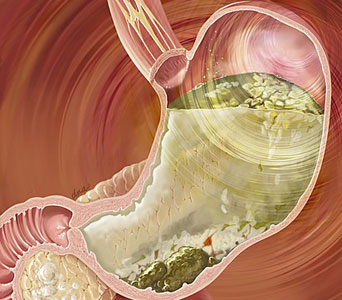Gastroparesis is a disorder wherein the stomach takes too long to empty its contents or delayed gastric emptying. This disorder commonly affects people with diabetes, hence the term, Diabetic Gastroparesis.




 In our digestive system, we have what we call as the vagus nerve, it controls the movement of food through the digestive tract. If this nerve is damaged, the muscles of the stomach and intestines start to work out of hand, so the movement of food is slowed or stopped.
In our digestive system, we have what we call as the vagus nerve, it controls the movement of food through the digestive tract. If this nerve is damaged, the muscles of the stomach and intestines start to work out of hand, so the movement of food is slowed or stopped.
In diabetes, there is an abnormal increase of sugar levels in the blood and if it remains high for a long period of time, it damages the vagus nerve and also the blood vessels that carry oxygen and nutrients to the nerve.
As diabetics would have noticed, their bowels and intestines work in a slower paced of emptying its contents, leading them to manifest those sickening and bothersome symptoms of diabetic gastroparesis.
What are the signs and symptoms of Diabetic Gastroparesis?




- Heartburn or Gastroesophageal reflux (stomach contents regurgitate to the esophagus)
- Nausea and Vomiting of undigested food
- Dehydration
- Early feeling of fullness when eating
- Lack of appetite and weight loss
- Abdominal bloating
- Erratic blood glucose (sugar) levels
If you have these symptoms, better have it check with your health care provider before complications set in. When food stays on our stomach for long, it may spoil leading to bacterial growth. This undigested food will soon hardens and forms a lump called a bezoar. This lumps will block your stomach and hinders the food you ate from moving into the small intestine.
Image Credits: nhs.uk, hcplive, popsugar, healthtap

